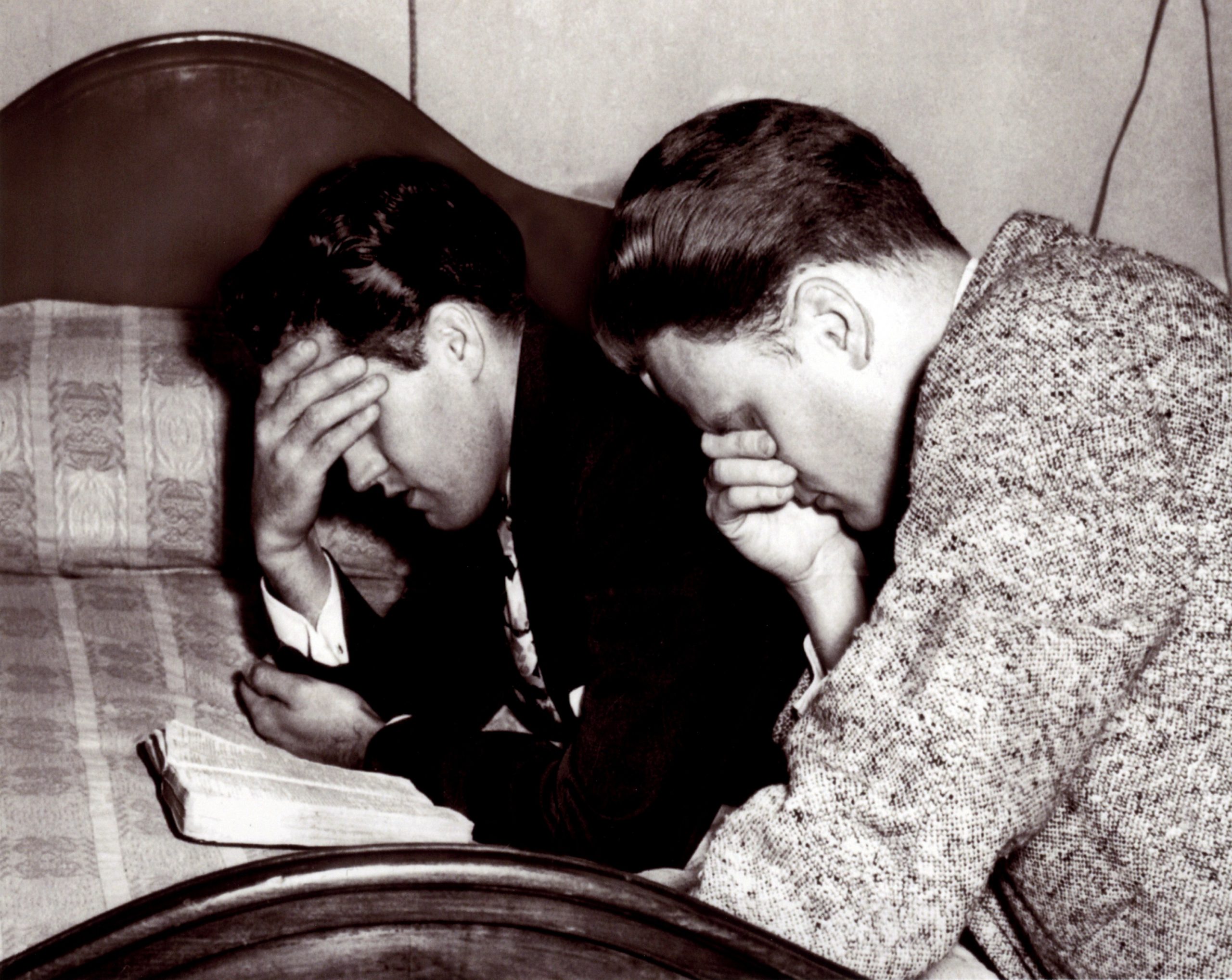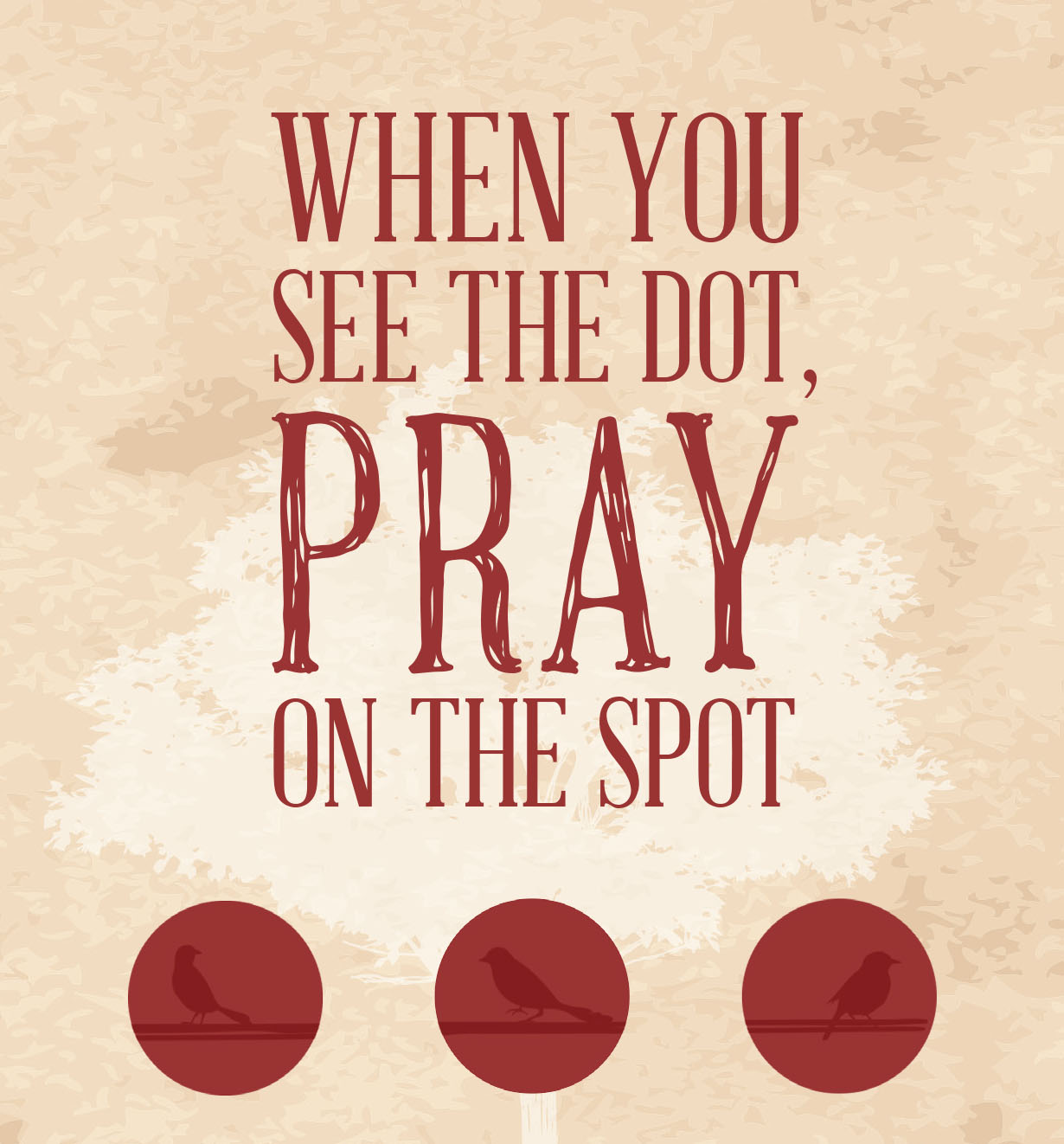“Pray on the Spot”
July 22, 2021
Categories: BGEA Ministry, Cliff Barrows, Prayer, The Archive Collection
Categories: BGEA Ministry, Cliff Barrows, Prayer, The Archive Collection

This article originally appeared in Decision magazine in 2005
Cliff Barrows, a longtime friend and associate of Billy Graham, as well as music and program director at his Crusades, worked beside Mr. Graham (affectionately known to him as “Bill”) for nearly 60 years. He also served as a “prayer historian” of this foundational element of BGEA’s ministry through the decades.
Prayer has been the heartbeat of our mission.
“The three most important things you can do,” Billy Graham says, “are to pray, pray, pray!” Bill and I spent six months in the United Kingdom in 1946 and 1947 and, in Wales, we heard accounts of the Welsh Revival. Those accounts touched Bill’s heart. He was moved to challenge people to pray for revival.
Bill had a passion to fulfill his calling as an evangelist and to pray that God would lead in every step in fulfilling our mission. That drew us together and cemented our relationship over six decades. Our praying together brought us into a unique covenant relationship–much like Jonathan and David of the Old Testament–that God has preserved and kept to this day.
One of our very first U.S. Crusade meetings was in 1947 in Charlotte, N.C., Bill’s hometown. There we began noontime prayer meetings and radio programs. About a month before a Crusade, we would buy time for a morning slot on a local radio station. The Billy Graham Prayer Time Program was the basis of the first “cottage prayer meetings,” during which women who were gathered in homes would tune into the program.
If a Crusade city wasn’t too large, we tried to have radio-coordinated prayer meetings on every city block. The program would include music, a brief devotional and prayer requests. I would announce the sermon title for the next night and say, “All over this town people are praying.” The groups would share their prayer requests in their homes and pray.
Listeners were encouraged to pray out loud and to use sentence prayers: “You don’t have to be formal in your prayers,” I would say. “You may not be able to pray like your pastor prays, but just talk to your heavenly Father like I’m talking to you today–or like you would talk to your earthly father or your dearest friend. That’s who Jesus is, and He’s concerned about us.”
Half-nights of prayer were held at the Crusade’s prayer tent. We would be in those prayer tents on our knees in the sawdust until 1 or 2 in the morning. If no prayer tent was available, intercessors would go to a church to pray. That happened in city after city.
Back in 1949 a woman named Pearl Goode, who lived in Los Angeles, had prayer seminars in her home with Fuller Seminary students and taught them the ministry of prayer. Unknown to us, she was a prayer warrior for the first LA Crusade and followed us for several years. God laid upon her heart a burden for those Crusade cities. She would make arrangements to stay in an area home or in a room by herself. She would not attend the Crusade meetings, but she prayed for Bill especially as he was preaching, that God would anoint him. She made it her ministry to be on her knees during his preaching and invitation time. She would call out, “Lord, bless Billy tonight as he preaches on the Cross. Pour out Your Spirit into his heart.”
When you have somebody praying, crying out to God like that, it gives you great confidence that God is going to honor “the effective, fervent prayer of a righteous person” (Cf. James 5:16). He’s promised to do that. We believe that and encourage people to pray. God honored Pearl’s prayers. Eventually we found out that she was coming, and we made possible her transportation–but for several years she scraped up enough money to get to Crusade cities on her own. In those days we would have sometimes eight and 10 meetings a year. She would go to as many as she could.
Our prayer emphasis increased at the 1949 Los Angeles Crusade and even more specifically at the Columbia, S.C., Crusade in 1950. There we started having a prayer chairman for the Crusades. Our Crusade Director, Willis Haymaker, took seriously this prayer concern, and he and Mr. Graham chose as the basis for our prayer emphasis 2 Chronicles 7:14: “If my people, which are called by my name, shall humble themselves, and pray, and seek my face, and turn from their wicked ways; then will I hear from heaven, and will forgive their sin, and will heal their land” (KJV). We have continued to use this verse to this day.
Also, our associate Grady Wilson led a prayer chain at Crusade meetings. He would take a few minutes each night during the service to establish time periods for people to pray. “How many of you will take from 10 to 10:30 when you get home tonight?” he would ask. “Raise your hand.” We set up 30-minute segments through the night and people would set their clocks to get up in the night and pray earnestly for the Crusade.
A short time later we began using the Operation Andrew cards, on which Christians listed the people they would pray for and invite to the Crusade. In the mid-1980s the prayer triplet program was launched. People would covenant with two others to spend time praying together during the day–often businesspeople would do it at noontime. Each person would have three people for whom to pray specifically, and he or she would share the names so that each would have nine names on his or her prayer list. This got people praying fervently and specifically.
Millie Dienert came on the scene about 1950. Her husband, Fred, and his partner, Walter Bennett, had contacts with the ABC networks. They urged Bill to go on the radio with the Hour of Decision.
Millie organized worldwide prayer for all of BGEA’s Conferences. We had the Berlin Congress (1966), the Lausanne Congress (1974) and the Amsterdam Conferences (1983, 1986, 2000)–and she was the one who coordinated prayer groups around the world.
In each country she had prayer chairmen who had contacts within the country. She traveled across the United States to speak at prayer rallies–and she did it at her own expense.
BGEA has used various prayer reminders through the years. The 1957 New York Crusade used stickers that read “Pray for New York.” People could put them on the old dial telephones and would be reminded to pray whenever they went to the phone. Those stickers were sent out by the thousand.

We’ve also used small, colored “prayer dots,” which people could place in the center of their watches. People were reminded wherever they were: “Pray on the spot when you see the dot.” I had a blue dot stuck on the center of my watch. Sometimes it was just a flash prayer, but it was a God-consciousness: “Lord, we need You to move in this situation.”
Prayer reminders were sent out with messages like “Prayer changes things” and “Prayer changes people.” Every avenue we could think of to encourage people to pray was exhausted.
Pray, pray, pray. That is the greatest need of our ministry still today. It’s not organization or great corporate structures or design strategy. All of that is good, but we’ve got to humble ourselves before God and put the emphasis on prayer. Any ministry or organization in Christian work is only as powerful as the prayer life of its leaders.
“The effective, fervent prayer of a righteous man avails much” (James 5:16, NKJV). Don’t give up. Hang on. George Müller, the great prayer saint of the 19th century from Bristol, England, prayed for some 50 years for a friend who came to Christ after Müller passed away. “More things are wrought by prayer than this world dreams of,” wrote Alfred Lord Tennyson.
Someday we’ll know the answers to our prayers.